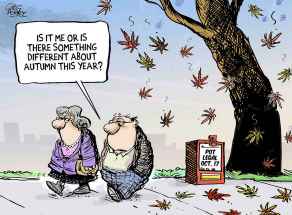Top Jets line’s shot-attempt differential? Don’t worry about it
Read this article for free:
or
Already have an account? Log in here »
To continue reading, please subscribe:
Monthly Digital Subscription
$0 for the first 4 weeks*
- Enjoy unlimited reading on winnipegfreepress.com
- Read the E-Edition, our digital replica newspaper
- Access News Break, our award-winning app
- Play interactive puzzles
*No charge for 4 weeks then price increases to the regular rate of $19.00 plus GST every four weeks. Offer available to new and qualified returning subscribers only. Cancel any time.
Monthly Digital Subscription
$4.75/week*
- Enjoy unlimited reading on winnipegfreepress.com
- Read the E-Edition, our digital replica newspaper
- Access News Break, our award-winning app
- Play interactive puzzles
*Billed as $19 plus GST every four weeks. Cancel any time.
To continue reading, please subscribe:
Add Free Press access to your Brandon Sun subscription for only an additional
$1 for the first 4 weeks*
*Your next subscription payment will increase by $1.00 and you will be charged $16.99 plus GST for four weeks. After four weeks, your payment will increase to $23.99 plus GST every four weeks.
Read unlimited articles for free today:
or
Already have an account? Log in here »
Hey there, time traveller!
This article was published 09/10/2018 (2623 days ago), so information in it may no longer be current.
After two games in this young NHL season, the Jets are a middle-of-the-pack team in terms of shot-attempt differential at 5-vs-5, also known as Corsi, at 50.3 per cent. It’s far too early to draw conclusions about what that means, as they were 10th in that statistic last season at 51.5 per cent, which isn’t far off from where they have been so far.
Two games as a sample is essentially useless for any long-term analysis, but I have seen some worrying over the fact that the Jets’ top line has been their worst in shot-attempt differentials, with the Jets controlling just 43.5 per cent of the shot attempts while Blake Wheeler, Mark Scheifele and Kyle Connor are on the ice.
That number is more than nine per cent worse than how the Jets perform in terms of shot attempts when that group isn’t on the ice, which sounds pretty bad when you consider the weight of expectations for that line. Even if it were a larger sample size, I’m not sure it’s something to worry about.
Last season in 611 minutes together, that top line was 1.4 per cent worse in shot-attempt differential than the Jets were when they were off the ice, which is not how you want a top line to perform, but they were so strong in other metrics that it more than compensated for being outshot.
!function(e,t,n,s){var i=”InfogramEmbeds”,o=e.getElementsByTagName(t)[0],d=/^http:/.test(e.location)?”http:”:”https:”;if(/^/{2}/.test(s)&&(s=d+s),window[i]&&window[i].initialized)window[i].process&&window[i].process();else if(!e.getElementById(n)){var a=e.createElement(t);a.async=1,a.id=n,a.src=s,o.parentNode.insertBefore(a,o)}}(document,”script”,”infogram-async”,”https://e.infogram.com/js/dist/embed-loader-min.js”);
It should be noted that so far this year, Scheifele has been dominant by every category, but the important thing here is that this combination of players, for some reason, doesn’t really dominate Corsi the way a lot of top lines do, and never has.
For a nearly a decade, Corsi was the gold standard by which people could easily define good two-way play, but as the league has trended more towards parity overall, and the acceptance of that statistic leads teams to chase players who could drive shot-attempt metrics, it has become more difficult to view it in isolation.
The Jets’ top line is something relatively unique around the NHL — they get outshot in volume, but they make up for it in quality of chances. Both Wheeler and Scheifele are elite-level playmakers at 5-vs-5, while Connor and Scheifele are elite-level scoring chance and goal producers at 5-vs-5.
What that means is that while other teams may get more shots than the Jets while the top line is on the ice, the Jets are still going to score more. Their ability to generate high-quality chances is nearly unequalled, and they’re actually just as efficient at clogging up the passing lanes in their own zone and forcing opponents to shoot from the perimeter, which they do, a lot.
The Scheifele line meanwhile, fires the puck around the offensive zone like it’s laser guided, with most of their shots immediately preceded by passes, forcing the goaltender and the defensive structure of the other team to be in transit while the shot is happening, breaking down defences and exposing goaltenders.
That holds true of not only their scoring chances, but their shots from the perimeter as well, which provides a shooting percentage boost no matter where the line shoots from.

And where does the line shoot from? Well thanks to Connor’s nose for the net and Scheifele’s ability to find himself free of checks in between the faceoff dots, more often than not they’re shooting from the inner slot area, where expected shooting percentage is about 22 per cent.
Even if the top line does struggle a bit to start the season, and an argument could be made based on this tiny sample that Wheeler and Connor could be better offensively at 5-vs-5, the nice thing about the Jets is that they can insulate a struggling line.
The line of Patrik Laine, Bryan Little and Matthieu Perreault are all in the 60 per cent range in Corsi, high-danger chances and slot-pass differentials, while the Jets’ fourth line of Andrew Copp, Adam Lowry and Brandon Tanev hasn’t been on the ice for a single high-danger chance against yet. That’s a luxurious amount of depth.
If the top line continues to be nine per cent below team average, that’s still a bit of a problem, but we’re two games into the season and talking about a line that has consistently demonstrated an ability to outscore its opponents by creating quality opportunities, both getting to the right areas of the ice and generating more pre-shot movement than other lines are capable of.
Long story short, I wouldn’t worry.

Andrew Berkshire
Andrew Berkshire is a hockey writer specializing in data-driven analysis of the game.
Our newsroom depends on a growing audience of readers to power our journalism. If you are not a paid reader, please consider becoming a subscriber.
Our newsroom depends on its audience of readers to power our journalism. Thank you for your support.








